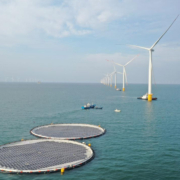Technological advances in air terminals
2022 is almost over, a year that was undoubtedly a great source of technological advances and a year of palpable recovery for the aeronautical sector.
But, it was an eye-opener of the benefits that new technologies have brought to one of the main economic sectors worldwide.
From artificial intelligence to biometric technology, these are just some of the new technology uses implemented in airports around the world, having as a first need, to improve the passenger’s experience. To make their stay in air terminals as comfortable and pleasant as possible.
That’s why with a view to full automation, we leave you a small tour of the technological innovations that serve firsthand to improve and configure new moments in airports around the world.
Seoul Airport…
Incheon Airport in Seoul launched the big data platform Airport Data Sandbox, which facilitates the collection of data to analyze information such as congestion in the terminal, weather, traffic, or transport forecasts.
It also provides information on passenger flow and allows for easy allocation of personnel management to improve airport operations. Each of the aforementioned data is handled in real-time.
Barcelona Airport…
And speaking of biometric technology, the Vueling Barcelona-Malaga route has a biometric program that covers the passenger’s entire transit from home to the boarding terminal.
This is AENA’s third biometric project at Barcelona airport, where through the Spanish airport holding company’s app, passengers can register for baggage check-in, optimizing waiting times and security controls.
All of the above while complying with the security of each passenger’s data.
Qatar Airport…
Hamad International Airport in Qatar is one of the airports considered a worldwide efficient airport, in terms of decision-making and technological improvements for the administration of the air terminal.
It uses the necessary technological tools not only for administration but also to ensure an optimal stay for users. That is why they are about to implement digital twin programs, to plan and visualize different scenarios based on the collection and study of data.
These are just some of the new scenarios that are being presented in air terminals around the world, but we are undoubtedly eager to see what 2023 will bring.
Keep reading more aviation news in our blog.










Leave a Reply
Want to join the discussion?Feel free to contribute!